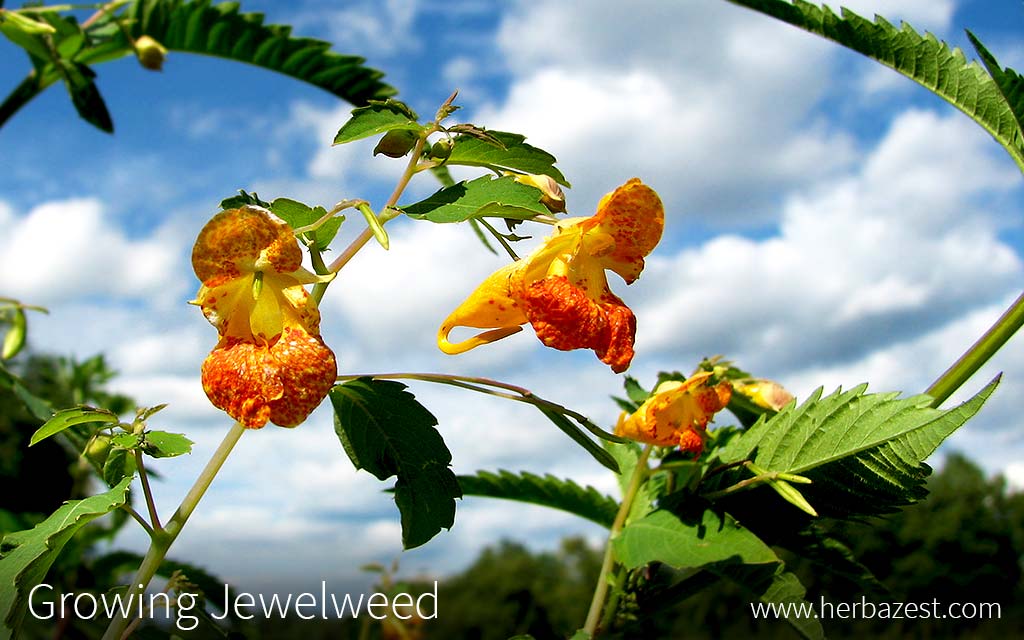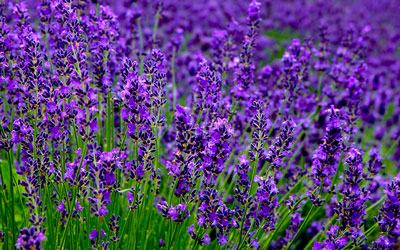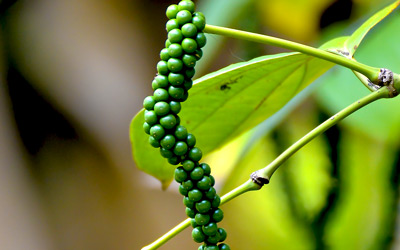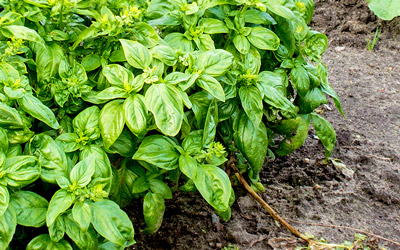Jewelweed can be cultivated in a variety of environments. It is fairly hardy and can compete with other invasive plants, but there are some conditions that have a significant effect on whether it grows to its optimum state. By following these basic growing guidelines you will be able to enjoy the beauty and medicinal benefits of jewelweed in your own garden.
1. Preparing the Soil
Jewelweed should be planted in consistently moist, fertile, and well-drained soil in order to maintain steady growth. For landscaping purposes, this plant is often planted in moist woodlands and along pond edges. While jewelweed prefers slightly acidic environments, it grows well in a wide range of soils, within a pH range of 3.4 - 7.7.
2. Planting
Planting Jewelweed Outdoors
Ideally, dry jewelweed seeds are stratified at 40°F (4°C) for two to three months before being planted in order to assure germination; however, at least a month of cold stratification will improve success rates. This being said, the jewelweed plant is vulnerable to frost at any stage, and it dies in extremely cold weather.
Jewelweed grows higher when it stands in clusters, so if seeds are sown close together, the plants will support each other and develop taller stems. To guarantee shorter plants, the seeds should be placed in the soil far apart from each other.
Seeds require ample sunlight to germinate, so they should not be sown too deep. No layer of mulch or compost should be added when growing jewelweed from seeds.
It is advisable to plant jewelweed seeds in early spring, when the weather is still cool but there is enough sunlight to allow germination.
Planting Jewelweed Indoors
If the weather is too cold, jewelweed can be cultivated inside - ideally in a sunny room or greenhouse. When the plants are mature enough, they should be transferred to a shaded area in the garden.
The seeds should be planted in a plastic container with sufficient drainage holes. Ensure they are kept well-watered, as the sunlight will quickly dry out the soil in this environment, which will be detrimental to growth.
3. Plant Care
Watering
Since its natural habitats are moist areas - such as stream banks, marshes, seepages, or woodland edges - jewelweed requires frequent watering, and will wither if the soil becomes dry for a prolonged amount of time. However, care should be taken not to over-water the plants, as this is likely to cause disease and rot.
One method of sustaining moisture is to add a layer of organic matter across the top of the soil. This should only be done when the plant is established, as the seeds and seedlings require sunlight to thrive.
Fertilizing
Fertilizers are not generally necessary for jewelweed to grow well; however, if the plant is struggling or seedlings are being planted, the soil can be amended with a layer of compost or an organic fertilizer.
Pruning
Jewelweed will grow tall if it is stood in a cluster - it can reach heights of five feet (150 cm). In order to control plant development, it will be necessary to prune it regularly.
Popularly known as “touch-me-not,” jewelweed plants bear pods full of seeds, which explode at the slightest contact. This leads to wide dispersal of seeds that can often germinate, and consequently a vast amount of jewelweed plants may appear. While this process can be difficult to avoid entirely, it is recommended to prune the plant before it happens in order to get rid of the pods and control the spread of the plant.
Weed Control
Jewelweed is a hardy plant that can compete with invasive neighbors. If other weeds grow close to it, they can be combated with an organic or synthetic weed-killer if the jewelweed is well-established. If the plant is still young, however, the spray is likely to kill it also. In this case, any weeds will need to be removed by hand.
4. Pest & Disease Control
Jewelweed can be affected by various pests and diseases. Awareness of these is beneficial when cultivating the plant, as is knowing how to combat them.
Pests
One pest commonly found on jewelweed is the mealybug. This wingless insect will suck the sap from the plant and excrete a substance called “honeydew,” which causes mold to grow on the affected area and weakens the plant until it dies. There are some chemical insecticides that can be effective on this bug.
Other natural predators that commonly attack jewelweed are ladybirds, wasps, caterpillars, and moths.
Diseases
Downy mildew frequently occurs on jewelweed. It can be recognized by the yellowing of the plants and the leaves curling as if they are dehydrated. Eventually, the leaves and flowers will die and fall off. It is not possible to recover affected plants, so it is necessary to remove them as soon as possible to avoid spread. Downy mildew can be somewhat avoided by ensuring the plant is not over-watered, as wet foliage and high humidity are suitable conditions for the disease to thrive.
Unfortunately, there are several other diseases that can kill jewelweed. Some of the more common are Alternaria leaf spot, Botrytis blight, and powdery mildew. Most of these can be treated with a fungicide, but if the infection is well-established, it is best to remove the whole plant.
It is also recommended to prune the plant if any diseased parts appear in order to inhibit the spread of the infection.
Wildlife
Creatures that will consume the components of the plant include deer - who enjoy the leaves and stalks - as well as some birds and rodents, who will eat the seeds.
5. Harvest
Jewelweed usually flowers from mid-summer to early fall or until the frost kills the plant. The flowers can be picked and used for consumption at any time.
Leaves, flowers, and seedpods should be harvested individually, starting from the top of the plant, in order to stimulate regrowth.
As jewelweed is an annual, it will not grow back again. After being harvested, it will not take long for the plant to wilt and dry out. If the sap is required, it needs to be extracted within 10 minutes after the plant is picked.
6. Storage
If not required immediately, jewelweed can be stored for later use. Fresh leaves and flowers will last for up to a week in the refrigerator in a sealed container.
If only the sap is required, it must be extracted as soon as possible and be placed in a sealed container. Again, this should keep for around a week.
The components of the plant can be dried and used later in the form of tea. It is also possible to make a tincture by crushing the whole plant and mixing it with alcohol. This is a long-term method of preserving jewelweed.
Jewelweed is an attractive flowering plant that also boasts medicinal qualities. For this reason, it can be a wonderful addition to any garden, from where it can be directly collected and stored year-round in order to reap its many benefits.





